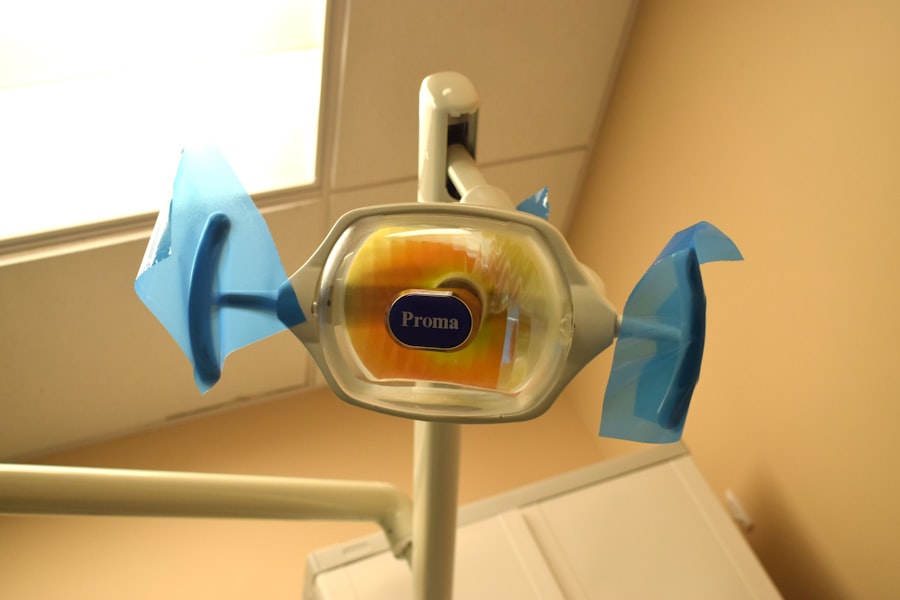In the rapidly evolving landscape of healthcare, digital marketing strategies have become indispensable for medical practices aiming to enhance their visibility and patient engagement. The integration of technology into marketing efforts allows healthcare providers to reach a broader audience, tailor their messaging, and ultimately improve patient acquisition and retention. A multifaceted approach that combines various digital channels—such as websites, social media, and online advertising—can significantly amplify a practice’s outreach.
For instance, a well-designed website that is user-friendly and informative can serve as the cornerstone of a practice’s online presence. It should not only provide essential information about services offered but also include educational content that addresses common patient concerns, thereby establishing the practice as a trusted authority in its field. Moreover, leveraging data analytics is crucial in refining digital marketing strategies.
By analyzing patient demographics, online behavior, and engagement metrics, healthcare providers can gain insights into what resonates with their audience. This data-driven approach enables practices to create targeted campaigns that speak directly to the needs and preferences of potential patients. For example, if analytics reveal that a significant portion of website visitors are searching for information on a specific health condition, the practice can develop content that addresses this topic in depth, thereby attracting more visitors and converting them into patients.
Additionally, utilizing pay-per-click (PPC) advertising can further enhance visibility by placing the practice at the top of search engine results for relevant keywords, ensuring that it captures the attention of those actively seeking healthcare services.
Key Takeaways
- Effective digital marketing strategies are essential for expanding healthcare practice visibility.
- Engaging actively on social media helps build stronger patient relationships and trust.
- Patient referral programs can significantly increase new patient acquisition.
- Local community involvement enhances reputation and fosters patient loyalty.
- Optimizing SEO and leveraging email campaigns improve online presence and patient communication.
Social Media Engagement
Social media platforms have transformed the way healthcare providers interact with patients and the community at large. Engaging with patients through social media not only fosters a sense of community but also enhances brand loyalty and trust. Platforms such as Facebook, Instagram, and Twitter allow practices to share valuable health information, promote services, and engage in conversations with patients in real-time.
For instance, a dental practice might post educational videos on proper oral hygiene techniques or share success stories of patients who have undergone transformative treatments. This type of content not only informs but also humanizes the practice, making it more relatable to potential patients. Furthermore, social media engagement can be a powerful tool for addressing patient concerns and feedback.
By actively monitoring comments and messages, healthcare providers can respond promptly to inquiries or complaints, demonstrating their commitment to patient care. This level of responsiveness can significantly enhance patient satisfaction and encourage positive word-of-mouth referrals. Additionally, social media campaigns that encourage user-generated content—such as asking patients to share their experiences or participate in health challenges—can create a sense of belonging and community around the practice.
Such initiatives not only increase engagement but also provide authentic testimonials that can be leveraged in future marketing efforts.
Patient Referral Programs

Patient referral programs are an effective strategy for healthcare practices looking to expand their patient base through existing relationships. These programs incentivize current patients to refer friends and family members by offering rewards or discounts on services. The rationale behind this approach is simple: people are more likely to trust recommendations from those they know rather than traditional advertising.
For example, a family practice might implement a referral program where existing patients receive a discount on their next visit for every new patient they refer. This not only encourages current patients to spread the word about the practice but also creates a sense of appreciation for their loyalty. To maximize the effectiveness of referral programs, it is essential to communicate them clearly to patients.
This can be achieved through various channels, including email newsletters, social media posts, and in-office signage. Additionally, practices should ensure that the referral process is straightforward and seamless. Providing patients with referral cards or personalized links can facilitate easy sharing with potential new patients.
Tracking the success of these programs through metrics such as referral rates and new patient acquisition can help practices refine their strategies over time. Ultimately, a well-executed patient referral program can lead to sustained growth and a loyal patient community.
Local Community Involvement
| Metric | Description | Value | Measurement Period |
|---|---|---|---|
| Volunteer Hours | Total hours contributed by employees to local community projects | 1,250 | Q1 2024 |
| Number of Community Events | Events organized or sponsored in the local community | 15 | Q1 2024 |
| Local Partnerships | Number of active partnerships with local organizations | 8 | 2023 |
| Community Feedback Score | Average satisfaction rating from community surveys (scale 1-10) | 8.7 | 2023 |
| Funds Donated | Total funds donated to local community causes | 45,000 | 2023 |
Local community involvement is a cornerstone of successful healthcare marketing strategies. By actively participating in community events and initiatives, healthcare providers can build strong relationships with local residents while enhancing their visibility within the community. Sponsoring health fairs, participating in charity runs, or offering free health screenings are just a few examples of how practices can engage with their communities.
These activities not only demonstrate a commitment to public health but also provide opportunities for direct interaction with potential patients. Moreover, collaborating with local organizations—such as schools, gyms, or non-profits—can amplify outreach efforts. For instance, a pediatric practice might partner with local schools to provide educational workshops on childhood nutrition or safety.
Such collaborations not only position the practice as a community leader but also create lasting connections with families who may seek care in the future. Additionally, showcasing these community involvement efforts on social media and the practice’s website can further enhance its reputation and attract new patients who value community-oriented care.
Search Engine Optimization (SEO)
Search Engine Optimization (SEO) is a critical component of digital marketing strategies for healthcare practices seeking to improve their online visibility. By optimizing their websites for search engines, practices can increase their chances of appearing at the top of search results when potential patients search for relevant keywords. This involves various techniques, including keyword research, on-page optimization, and link-building strategies.
For example, a cardiology practice might focus on keywords such as “heart health,” “cardiologist near me,” or “symptoms of heart disease” to attract individuals seeking information or services related to cardiovascular health. In addition to keyword optimization, creating high-quality content is essential for effective SEO. Regularly publishing blog posts that address common patient questions or provide insights into recent medical advancements can establish the practice as an authority in its field while improving search rankings.
Furthermore, optimizing local SEO is crucial for healthcare providers since many patients search for services within their geographic area. This includes claiming and optimizing Google My Business listings, ensuring consistent NAP (Name, Address, Phone Number) information across online directories, and encouraging satisfied patients to leave positive reviews on platforms like Google and Yelp.
Email Marketing Campaigns

Email marketing remains one of the most effective tools for healthcare practices looking to maintain communication with existing patients while attracting new ones. By building an email list through sign-ups on their website or during patient visits, practices can send targeted messages that keep patients informed about services, promotions, and health tips. For instance, a dermatology clinic might send out seasonal newsletters featuring skin care tips for summer or reminders about annual skin checks.
This not only provides value to patients but also keeps the practice top-of-mind when they need care. Segmentation is key in email marketing campaigns; by categorizing patients based on factors such as age, health conditions, or previous visits, practices can tailor their messages for maximum relevance. For example, sending reminders for flu shots to older patients or promoting wellness programs to younger families can enhance engagement rates significantly.
Additionally, incorporating personalized elements—such as addressing recipients by name or referencing their previous visits—can foster a stronger connection between the practice and its patients. Tracking metrics such as open rates and click-through rates allows practices to refine their email strategies over time for better results.
Patient Testimonials and Reviews
Patient testimonials and reviews play a pivotal role in shaping the reputation of healthcare practices in today’s digital age. Prospective patients often turn to online reviews when deciding where to seek care; therefore, cultivating positive feedback is essential for building trust and credibility. Encouraging satisfied patients to leave reviews on platforms like Google, Yelp, or Healthgrades can significantly enhance a practice’s online presence.
For instance, after completing a successful treatment plan, a physician might follow up with a patient via email or text message to request feedback and guide them on how to leave a review. Incorporating testimonials into marketing materials—such as websites or social media posts—can further amplify their impact. Video testimonials can be particularly compelling; seeing real patients share their experiences adds authenticity and relatability that written reviews may lack.
Additionally, addressing negative reviews promptly and professionally demonstrates a commitment to patient satisfaction and can mitigate potential damage to the practice’s reputation. By actively managing online reviews and showcasing positive patient experiences, healthcare providers can create a strong online presence that attracts new patients while retaining existing ones.
Networking with Other Healthcare Professionals
Networking with other healthcare professionals is an often-overlooked strategy that can yield significant benefits for medical practices. Building relationships with specialists and other providers allows for mutual referrals and collaboration on patient care initiatives. For example, a primary care physician might establish connections with local specialists in cardiology or orthopedics to ensure that they can refer patients seamlessly when specialized care is needed.
This not only enhances patient outcomes but also positions the primary care provider as a central figure in the patient’s healthcare journey. Participating in local medical associations or attending industry conferences can further facilitate networking opportunities. These events provide platforms for healthcare professionals to share knowledge, discuss best practices, and explore potential partnerships that can enhance service offerings within their communities.
Additionally, collaborating on community health initiatives—such as wellness fairs or educational seminars—can strengthen ties between providers while promoting overall public health awareness. By fostering these professional relationships, healthcare practices can create a robust referral network that benefits both providers and patients alike.


